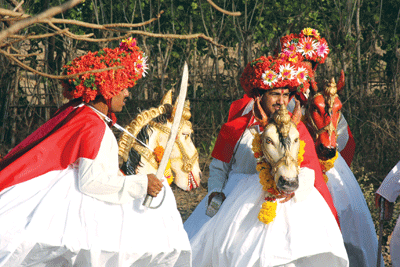The rich culture of Goa boasts over 50 traditional folk dances that are now lost or on the brink of extinction. The Goan speaks to the crew of ‘Dances of Goa’, a 90 minute documentary aimed at reviving Goa’s folk dance legacy.

In your mind’s eye, when one thinks of the dances of Goa,one thinks of the Fugdi, the Dekhni and the Mando. One can almost picture thegraceful movements, with the backdrop of the village at dusk, the colourfulcostumes worn by the women and the graceful movements tempered with fun andfrolic. However there is so much more to the dances of Goa that is sadly beingforgotten over time.
There are more than 50 traditional folk dances in Goa thatmost Goans have never even heard of. Lotus Film and TV production took theinitiative of bringing to the forefront 14 of these dances on DVD, so that now,at least some of these dances will be remembered. Director Nalini Sousa says,“This 90 minute documentary shows us how these dances are connected to reallife. We have interviewed historians, village leaders and researchers as wellso that people can understand the true meaning behind these dances.”
Most of these dances are over 400 years old and some of themeven use instruments that are now obscure like the Surpava which is made ofbamboo. Another such instrument is called the Vakya which is worn as an ankletand has metal balls in it. The documentary explains the origins of theinstruments as well. Editor Prasheela Mapusekar explains, “There are two mainfestivals in Goa- Shigmo, where the men dance – and Dhalo, where the womendance which also includes all forms of Fugdi. This is probably the only time that these dances are performed. Eventhen they have undergone so many modifications, its authenticity is lost.”Nalini also says, “The reason these dances are unheard of is because they arenot being added to the school curriculum. No one knows about them. There has tobe a way to create awareness like performing some of these dances at schoolfunctions. It’s one way of keeping tradition alive.”
Different communities and religions perform variations ofthe same dance. The Fugdi for example is danced in four different ways by theHindus, Catholics, and Velip community. Some of the dances are like plays anddepict the everyday colourful village life. All of these dances tell a poignantstory. A story that may well be lost forever, if we do not preserve it.